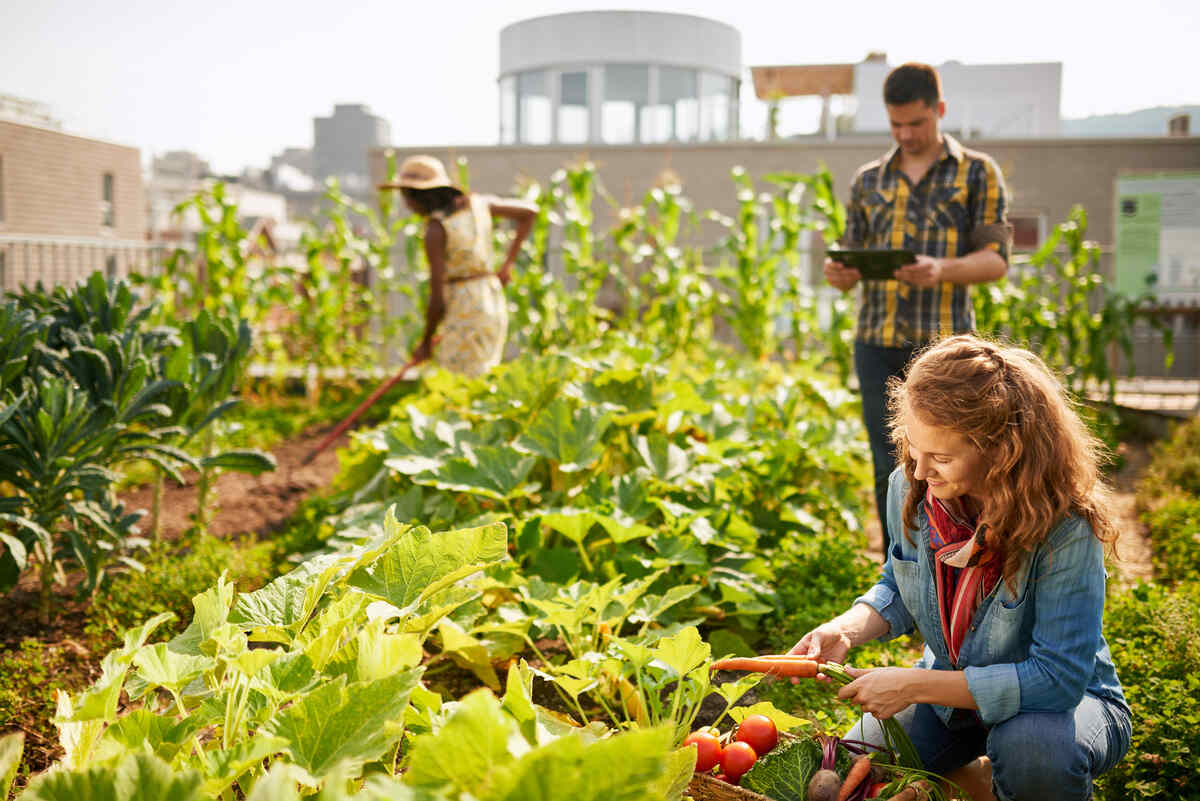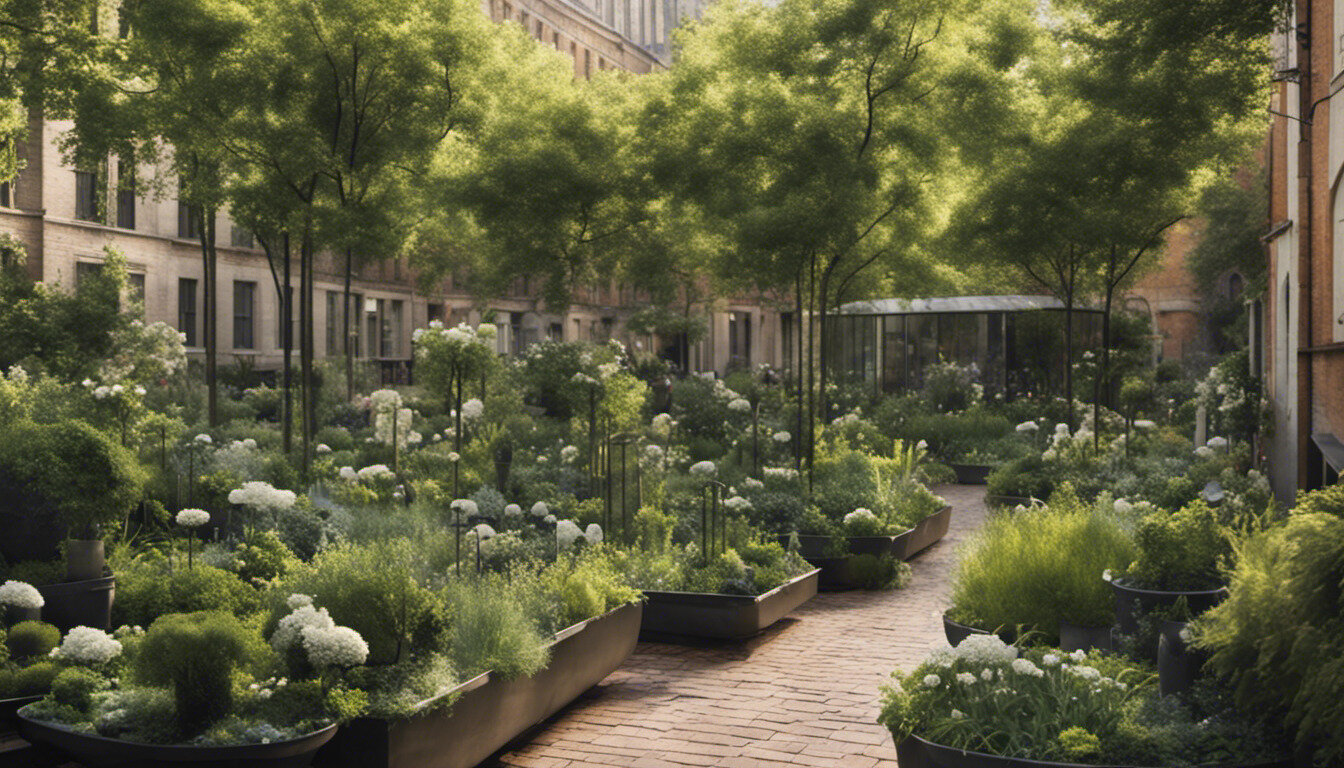Our City Blooming Statements
Our City Blooming Statements
Blog Article
The Ultimate Guide To City Blooming
Table of ContentsFacts About City Blooming RevealedOur City Blooming PDFsThe Ultimate Guide To City BloomingThe smart Trick of City Blooming That Nobody is DiscussingCity Blooming - An Overview
Interested in growing food for sale in the City of Chicago? Below is a list of regularly asked questions regarding the policies and regulations that growers need to take into consideration when preparing an urban agriculture task.
The zoning change does not modify any type of other codes managing composting, structure licenses, acquiring or leasing City possessed home, organization licenses or ecological contamination. There are existing codes that regulate these problems and they remain in complete impact and may apply to your project. Neighborhood yards are typically possessed or managed by public entities, public companies or community-based organizations and kept by volunteers.
Urban ranches expand food that is meant to be marketed, either on a nonprofit or for-profit basis. As a result of their industrial objective, city farms need an organization permit. Yes. A community garden is permitted to sell surplus produce that was grown on site if the sales are accessory or subservient to the garden's primary purpose defined over.
How City Blooming can Save You Time, Stress, and Money.
The amount of compost material can not go beyond 25 cubic lawns at any type of provided time according to the requirements in 7-28-715 of the City's Municipal Code. Because the soil at many brand-new garden websites requires modifying, garden compost, dirt, timber chips, or various other products can be obtained to construct or improve the growing area.

If a building license is needed after that the hoophouse will certainly be considered an accessory building. You can discover out even more about the structure permit needs by getting in touch with the Department of Structures. The 25,000-square-foot size limitation is meant to prevent a single area yard from dominating an offered block or interfering with the block's existing household or industrial personality.
The limit does not use to yards found in Public Open Room (POS) districts. Can there be even more than one neighborhood garden that is 25,000 square feet on a solitary block? Secure fencing is not required, nevertheless, yards that have large car park locations might be needed to install fence or various other landscape design features.
Unknown Facts About City Blooming
B1 & B2 areas call for that all commercial usage activities be conducted indoors. Is fence required for urban farms? Fences might be needed, along with landscaping and screening, for specific auto parking areas and outdoor job or storage areas depending on area and the certain activity taking area.
Urban ranches call for building permits and zoning authorizations prior to building and construction (indoor plants). Various other types of city review might be called for depending on details structures, tasks, dimension, landscaping, licensing, public health and stormwater management concerns.
The Department of Company Affairs and Customer Protection can assist establish the particular kind of organization permit that's called for. Off road car park is required for many business tasks in Chicago. The needed number of parking areas is based on the number of staff members working on site and not the square video of the expanding room.
The 3-Minute Rule for City Blooming

A metropolitan ranch can offer compost product created on site, however, the procedure needs to conform with the laws in 7-28-715 of the Chicago Municipal Code. Aquaponic systems are enabled inside your home on metropolitan farms in numerous zoning districts.
Up to 5 hives or swarms of honey might be maintained as an accessory use. However, beekeepers should register with the Illinois Department of Agriculture. To find out more regarding the suggested zoning modification you might speak to the Division of Housing and Economic Advancement, Bureau of Preparation and Zoning at 312.744.8563.
Farming in cities and city areas An urban farm in Chicago. Urban agriculture describes different methods of growing. https://www.ted.com/profiles/47172561, processing, and distributing food in city locations. The term likewise relates to the area activities of pet husbandry, tank farming, beekeeping, and cultivation in an urban context. Urban farming is distinguished from peri-urban farming, which happens in backwoods beside residential areas.
Indicators on City Blooming You Should Know
It can entail a movement of natural cultivators, "foodies" Click Here and "locavores", who look for to create social networks founded on a shared values of nature and neighborhood holism. These networks can develop using formal institutional assistance, coming to be incorporated into neighborhood town planning as a "transition community" activity for lasting urban growth.
The a lot more straight accessibility to fresh vegetable, fruit, and meat products that may be know via urban agriculture can enhance food safety and food safety and security while decreasing food miles, causing reduced greenhouse gas exhausts, thereby adding to climate modification reduction. Some of the very first evidence of city agriculture originates from Mesopotamia.
Report this page